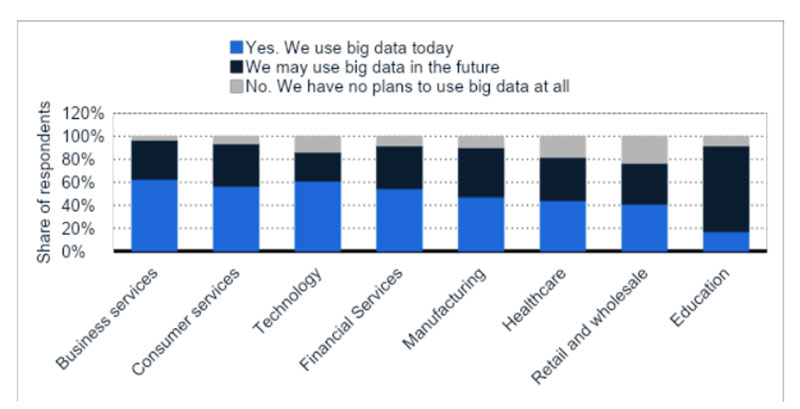A business model describes how an organization creates, distributes, and captures value in a profitable manner. The model should cover the four main areas of a business: customers, suppliers, infrastructure, and economic viability (Osterwalder & Pigneur, 2010).
According to Gassmann et al. (2014), the business model is a kind of blueprint of a strategy that will be applied in the structures, processes, and systems of a company. It describes a company current activity. The model consists of four dimensions, presented in what they called “a magic triangle”:
- The customer
- The value proposition
- The value chain
- The profit mechanism
The aim of the triangle according to the authors is to have a clear notion about who are our target customers, what do we offer to our customers, how do we produce our offering and why does it generate profit. Gassmann et al. (2014) suggests that an adjustment at one corner (for example, optimizing revenue generation) automatically necessitates adjusting the other two corners. Also, innovation of a business model requires modifying at least two of these four dimensions.
Business Schools also have a business model and like the rest of the industries in the economy, the management education sector is facing major challenges. Some of these challenges come from external aspects such as the increase relevance of rankings and accreditations and the considerable decrease in public funding, and internal issues such as the continuous debate on rigor vs. relevance in research and undoubtedly the digital revolution (Kaplan, 2018).
For business schools the technologies available from the digital revolution to influence how to create, deliver, and capture value are varied. New developments in ICT bring new facets to learning and specially e-learning every day. The ones that are considered most relevant are augmented reality, big data, blockchain, mobile learning and artificial intelligence (AI). We will focus on the first four on this post and leave AI for our next contribution. Its relevance in personalized learning warrants its own post.
Augmented reality
According to Hamzah et al. (2021), the term augmented reality refers to “technology that enhances the user’s sensory experience of the real world with a layer of computer-assisted contextual knowledge” (p. 50). These are environments where physical and digital objects coexist. The distinction regarding virtual reality technology is that it completely replaces the real world with a synonymous environment, while augmented reality provides the context of the user with virtual knowledge. Augmented reality allows the superposition of a layer of virtual knowledge on real elements to improve the understanding of reality by the user. That is, while virtual reality provides constructed reality, augmented reality provides an enhanced view of a real image. In the context of training, augmented reality allows, among other things, to increase learning engagement.
Figure 1. Augmented (AR), virtual reality (VR), and mixed reality (MR) market size worldwide from 2021 to 2024 (in billion U.S. dollars)

The global augmented reality (AR) and virtual reality (VR) market was forecast to reach US $ 18.8 billion by 2020. This represented an increase of more than 78 percent over the last year’s expense. As figure 1 shows, the size of the global extended reality (XR) market is expected to reach approximately US $ 300 billion by 2024. Experts point out that in the future this technology will be as prominent as mobile devices in the current market (IDC & Statista, 2020).
For the experts of the industry of extended reality (XR), the prognosis is that the sector of healthcare and medical devices will be where the biggest irruption of the immersive technologies will take place during the next 12 months. The second place is occupied by the education sector, mentioned by 28 percent of the respondents (see figure 2).
Figure 2. Sectors expected to witness the most disruption by immersive technologies over the next 12 months according to XR/AR/VR/MR industry experts in the United States in 2020

Big data
According to Quero (2020), the Big Data concept refers to the management of large volumes of data carried out by companies and public bodies. The data can be of three types:
- Structured
- Unstructured
- Semi-structured
Big Data refers to the management of large volumes of data carried out by companies and public bodies. The data can be of three types:
- Structured. It is data that has some type of structure, such as that obtained from databases.
- Unstructured. Those that lack any structure, such as emails, text files, or photo or video files.
- Semi-structured. It is data that combines characteristics of the structured and unstructured. Examples of them would be documents that are in CSV, XML, JSON format, or those from systems such as electronic data interchange (EDI).
Big Data is based on 3V principles: volume, speed, and variety. Volume, that is, the amount of data generated; velocity suggests the speed with which data is collected and processed; and variety refers to structured, unstructured, and semi-structured data formats (Bagde et al., 2021).
Figure 3. Big data technology adoption plans in organizations worldwide as of 2019, by vertical

Even though emerging technologies such as artificial intelligence, machine learning and Big Data will further increase the influence of technologies in education in the coming years, the education sector is lagging other industries in what regarding the adoption of Big Data technology. As can be seen in figure 3, by 2019 only 17 percent of the organizations in the sector were implementing it; however, 74 percent indicated that they could use it in the future, while 9 percent indicated that they have no plans to use this technology. This data contrasts with what happens in the services industry, in which around 63 percent of those surveyed said that their organization was currently using Big Data technology in 2019.
Big Data takes on special relevance in the analysis of learning and the possibility of understanding and optimizing its results. In e-learning, the analysis of the results of the teaching process is advancing with the progress of Machine Learning algorithms and Big Data techniques. Learning Management Systems allow managing learning analysis through key performance indicators and thus predicting student performance (Souabi et al., 2021). This positive correlation between a student’s grades and their use of the LMS was demonstrated in a study at the University of Maryland Baltimore County (UMBC). The study found that students who scored less than a C continuously demonstrated 40 percent less LMS use compared to students who scored a C or better (Hanover Research, 2016).
Two other examples related to the potential that learning analytics can have to help educational institutions in their decision-making process and in the design of institutional strategies are Syracuse University and Saint Louis University. In the first, learning analysis was used in its student advisory programs (Grush, 2018), and in the second, Big Data was used to make calculated decisions regarding its scope in enrolment (Selingo, 2017).
Blockchain
Blockchain is a technology that guarantees the ownership of a digital asset. It allows the exchange between people without intermediaries, reducing costs, guaranteeing the immutability of the digital asset, and ensuring its traceability. It is a set of databases distributed in different geographical spaces that store blocks of information. This enables public peer accounting based on the impossibility of modifying or reviewing the information once it has been registered.
PwC defines blockchain as a decentralized ledger of all transactions through a peer-to-peer network. With this technology, participants can confirm transactions without the need for a central clearing authority (PWC, 2018). The technology was introduced as a result of its link to the Bitcoin currency and is commonly associated with cryptocurrencies, although it is currently being adopted on an increasing scale in the industry and is gaining popularity (Bartolomé Pina, 2020; Stoica et al., 2020).
According to Altinay et al. (2020), the blockchain could become a new platform for school management. Its application in record storage, learning identity verification, information security, and content protection represent the potential value that blockchain could have in education. Many States of the European Union have launched initiatives to implement blockchain technology, especially in the governmental area. From the perspective of the education sector, most blockchain applications are related to the management of graduation certificates and diplomas, especially for higher education (Stoica et al., 2020). It is also used in massive open online courses (MOOCs) and portfolios to verify skills and knowledge. Blockchain technology systems (Distributed Ledger Technology) will respond to the authentication, scale and cost problems of e-learning agencies (Bagde et al., 2021).
Figure 4. Worldwide spending on blockchain solutions from 2017 to 2024 (in billion U.S. dollars)

The projection of global spending on blockchain solutions in 2021 reaches 6.6 billion dollars (see figure 4). Forecasts suggest that spending on blockchain solutions will continue to grow in the coming years, reaching nearly US $19 billion by 2024.
Figure 5. Distribution of blockchain market value worldwide in 2020, by vertical
Source: IDC
Figure 5 shows how in 2020 the banking industry had a market share of nearly 30 percent of global blockchain market revenue, while process manufacturing accounted for 11.4 percent of global spending. In general, global spending on blockchain solutions will continue to grow in the coming years and “other sectors”, in which the education sector would enter, already represent more than a third of the market share.
Mobile Learning
Mobile learning is described as e-learning, regardless of location in time and space. The new learning model moves the learning process away from the physical classroom and from direct interaction with the trainer, whose role becomes that of supervisor and monitor of the learning process, clarifying doubts and guiding students towards resources that they could use successfully outside the classroom (Istrate, 2019).
Greany (2018) found that one of the distinguishing characteristics of the modern student is that they learn as needed, wherever and whenever. 56% do it on demand, 48% at nights and weekends, 41% at their workplaces, 30% during breaks or lunchtime, and 28% on the way to or from the place of work. 96% turn to their mobile phones (cell phones) to do searches when they need it and check their mobiles about ten times an hour. It seems clear that the accessibility of mobile learning and its portability conforms to the habitual behaviour and lifestyle of the modern student and therefore it will continue to be one of the most popular channels for e-learning.
According to Gupta et al. (2021), mobile learning has evolved as a powerful component of education. Mobile learning helps impart knowledge focused on learner accessibility, needs, infrastructure, and interaction, regardless of time or location. The development and launch of innovative applications (Apps) and services for mobile learning and online learning grows exponentially and does so hand in hand with the incredible advances in information and communication technologies (ICT). For students of all levels, mobile learning has become the preferred learning and access to knowledge format.
In summary, the success of business schools in creating, delivering, and capturing value will depend, among other things, on how they incorporate into their business model these disruptive technologies:
- Augmented reality and its potential in immersive teaching.
- The use of Big Data in learning analysis and its importance to understand and optimize learning outcomes.
- Blockchain and its application in the storage of records, verification of learning identity, information security and content protection, in addition to the ability to allow the student to manage personal learning itineraries.
- Mobile learning, which helps to impart knowledge focused on accessibility, needs, infrastructure and student interaction, regardless of time or place.
The article is originally published on EFMD Global website on 10 January 2022. It can be accessed here: https://blog.efmdglobal.org/2022/01/10/the-future-of-management-education-re-thinking-business-models/
References:
- Altinay, F., Beyatli, Ö., Dagli, G., & Altinay, Z. (2020). The Role of Edmodo Model for Professional Development: The Uses of Blockchain in School Management. International Journal of Emerging Technologies in Learning, 15(12), 256–270. https://doi-org.proxy18.noblenet.org/10.3991/ijet.v15i12.13571
- Bagde, P., Bobde, A., & Bagde, L. P. (2021). Information and Communication Technology (ICT) enabled Higher Education: Current Trends and Challenges. Ilkogretim Online, 20(1).
- Bartolomé Pina, A. (2020). Cambiando el futuro: “blockchain” y Educación. Pixel-Bit, Revista de Medios y Educacion, 59, 241–258. https://doi-org.proxy18.noblenet. org/10.12795/pixelbit.82546
- BCG (February 18, 2021). Augmented reality (AR) and virtual reality (VR) market size worldwide from 2016 to 2020 (in billion U.S. dollars) [Graph]. In Statista. Retrieved July 27, 2021, from https://www.statista.com/statistics/591181/globalaugmented-virtual-reality-market-size/
- Gassmann, O., Frankenberger, K., & Csik, M. (2014). The business model navigator: 55 models that will revolutionise your business. Pearson UK.
- Greany, K. (2018, August 15). Profile of a modern learner. Elucidat
- Grush, M. (2018, August 13). Data analytics and student advising: Creating a culture shift on campus. CampusTechnology.
- Gupta, Y., Khan, F., & Agarwal, S. (2021). Exploring Factors Influencing Mobile Learning in Higher Education – A Systematic Review. International Journal Of Interactive Mobile Technologies (IJIM), 15(12), pp. 140-157. doi: http://dx.doi.org/10.3991/ijim.v15i12.22503
- Hamzah, M., Ambiyar, A., Rizal, F., Simatupang, W., Irfan, D., & Refdinal, R. (2021). Development of Augmented Reality Application for Learning Computer Network Device. International Journal Of Interactive Mobile Technologies (IJIM), 15(12), pp. 47-64. doi: http://dx.doi.org/10.3991/ijim.v15i12.21993
- Hanover Research (2016, November). Learning Analytics for Tracking Student Progress.
- IDC & Statista. (November 17, 2020). Augmented and virtual reality (AR/VR) forecast spending worldwide in 2020 (in billion U.S. dollars), by segment [Graph]. In Statista. Retrieved July 27, 2021, from https://www.statista.com/statistics/737615/ar-vr-spending-worldwide-by-segment/
- ISTRATE, A. M. (2019). The Impact of the Virtual Assistant (VA) on Language Classes. ELearning & Software for Education, 1, 296–301. https://doi-org.proxy18. noblenet.org/10.12753/2066-026X-19-040
- Kaplan, A. (2018). A school is “a building that has four walls…with tomorrow inside”: Toward the reinvention of the business school. Business Horizons, 61(4), 599–608. https://doi-org.proxy18.noblenet.org/10.1016/j.bushor.2018.03.010
- Osterwalder, A., & Pigneur, Y. (2010). Business model generation: a handbook for visionaries, game changers, and challengers (Vol. 1). John Wiley & Sons.
- Perkins Coie (March 30, 2020). Sectors expected to witness the most disruption by immersive technologies over the next 12 months according to XR/AR/VR/MR industry experts in the United States in 2020 [Graph]. In Statista. Retrieved July 27, 2021, from https://www.statista.com/statistics/1185060/sectors-disruptedimmersive-technology-xr-ar-vr-mr/
- Quero, O. (2020, septiembre). Huge Data: la gestión masiva de datos. OBS Business School.
- Selingo, J. (2017, April 11). How colleges use big data to target the students they want. The Atlantic
- Souabi, S., Retbi, A., Idrissi, M., & Bennani, S. (2021). Towards an Evolution of E-Learning Recommendation Systems: From 2000 to Nowadays. International Journal of Emerging Technologies in Learning (IJET), 16(06), pp. 286-298. doi: http://dx.doi.org/10.3991/ijet.v16i06.18159
- Stoica, M., Mircea, M., & Ghilic-Micu, B. (2020). Using Blockchain Technology in Smart University. ELearning & Software for Education, 3, 134–141. https://doi-org. proxy18.noblenet.org/10.12753/2066-026X-20-187
About the Author
 Dr. Luis Toro Dupouy is Professor and Head of Academic Programs at OBS Business School (Spain).
Dr. Luis Toro Dupouy is Professor and Head of Academic Programs at OBS Business School (Spain).




![Deconstructing the Myth of Entrepreneurship iStock-2151090098 [Converted]](https://www.europeanbusinessreview.com/wp-content/uploads/2024/09/iStock-2151090098-Converted-218x150.png)






























